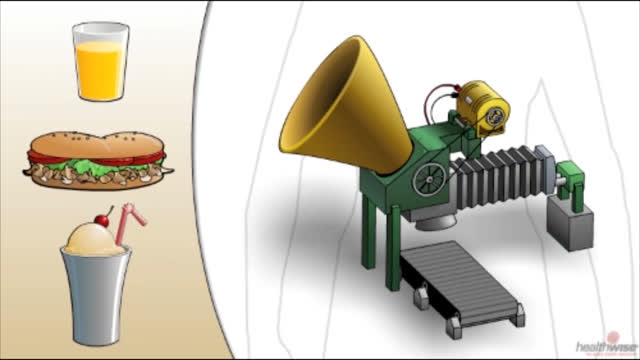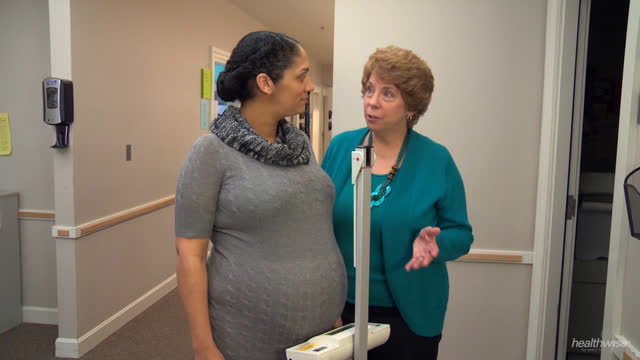Top of the pageActionset
Gestational Diabetes: Dealing With Low Blood Sugar
Introduction
Women who take insulin shots or take the medicine glyburide are at risk for low blood sugar levels. Most women with gestational diabetes do not have problems with low blood sugar (hypoglycemia). If your blood sugar (glucose) drops very low, make sure to get treated immediately so that neither you nor your baby is harmed.
- Low blood sugar occurs when the sugar level in the blood drops below what the body needs to function normally. Women who take insulin may get low blood sugar if they don’t eat enough food, skip meals, exercise more than usual, or take too much insulin.
- These steps can help you avoid a life-threatening emergency from low blood sugar:
- Test your blood sugar often so that you don’t have to guess when your blood sugar is low.
- Know the signs of low blood sugar, such as sweating, shakiness, hunger, blurred vision, and dizziness.
- The best treatment for low blood sugar is to eat quick-sugar foods. Liquids will raise your blood sugar faster than solid foods. Keep the list of quick-sugar foods in a convenient place. Wait 10 to 15 minutes after eating the quick-sugar food, and, if possible, check your blood sugar again.
- Keep some hard candy, raisins, or other sugary foods with you at all times. Eat some at the first sign of low blood sugar.
- Check your blood sugar before getting in a car, and don’t drive if your blood sugar level is less than 70 mg/dL.
- Teach your friends and coworkers what to do if your blood sugar is very low.
How to deal with low blood sugar emergencies
Here are some ways you can prevent and manage low blood sugar emergencies.
Be prepared
Although most women with gestational diabetes do not have problems with low blood sugar, you should always be prepared for the possibility.
- Keep some quick-sugar foods with you at all times. If you are at home, you will probably already have something close at hand that contains sugar, such as table sugar or fruit juice. Carry some hard candy or glucose tablets with you when you are away from home. To avoid causing high blood sugar, choose foods that contain about 15 grams of fast-acting carbohydrate.
- Learn the symptoms of low blood sugar, such as sweating, blurred vision, and confusion. Carry a list of the symptoms with you at all times, and post the list at home and work.
- Wear medical identification in case your blood sugar drops very low and you need help. Medical identification bracelets and necklaces are sold at many local drugstores and pharmacies.
- Keep a copy of instructions on how to use your blood sugar meter with the meter. Tell your family and friends where the instructions are and how to use your meter to check your blood sugar.
- Post information on emergency care for low blood sugar in a convenient place at home and at work for other people to use if you need help during a low blood sugar episode.
- Do not drive if your blood sugar is less than 70 mg/dL. Your reflexes are slowed, and you could have an accident.
Treat low blood sugar early
Treat low blood sugar levels as soon as the symptoms are noticed, whether by you or by someone else.
- Check your blood sugar often.
- Follow your doctor’s instructions for dealing with low blood sugar when your blood sugar level is below 70 mg/dL.
- Keep track of your symptoms and how you treated them in a low blood sugar level record( What is a PDF document? ).
- Talk with your doctor if you have low blood sugar. If you are taking insulin, your dose may need to be adjusted.
Credits
Current as of: April 16, 2019
Author: Healthwise Staff
Medical Review:Kathleen Romito, MD – Family Medicine & Adam Husney, MD – Family Medicine & Rhonda O’Brien, MS, RD, CDE – Certified Diabetes Educator
Current as of: April 16, 2019
Author: Healthwise Staff
Medical Review:Kathleen Romito, MD – Family Medicine & Adam Husney, MD – Family Medicine & Rhonda O’Brien, MS, RD, CDE – Certified Diabetes Educator
This information does not replace the advice of a doctor. Healthwise, Incorporated, disclaims any warranty or liability for your use of this information. Your use of this information means that you agree to the Terms of Use. Learn how we develop our content.







